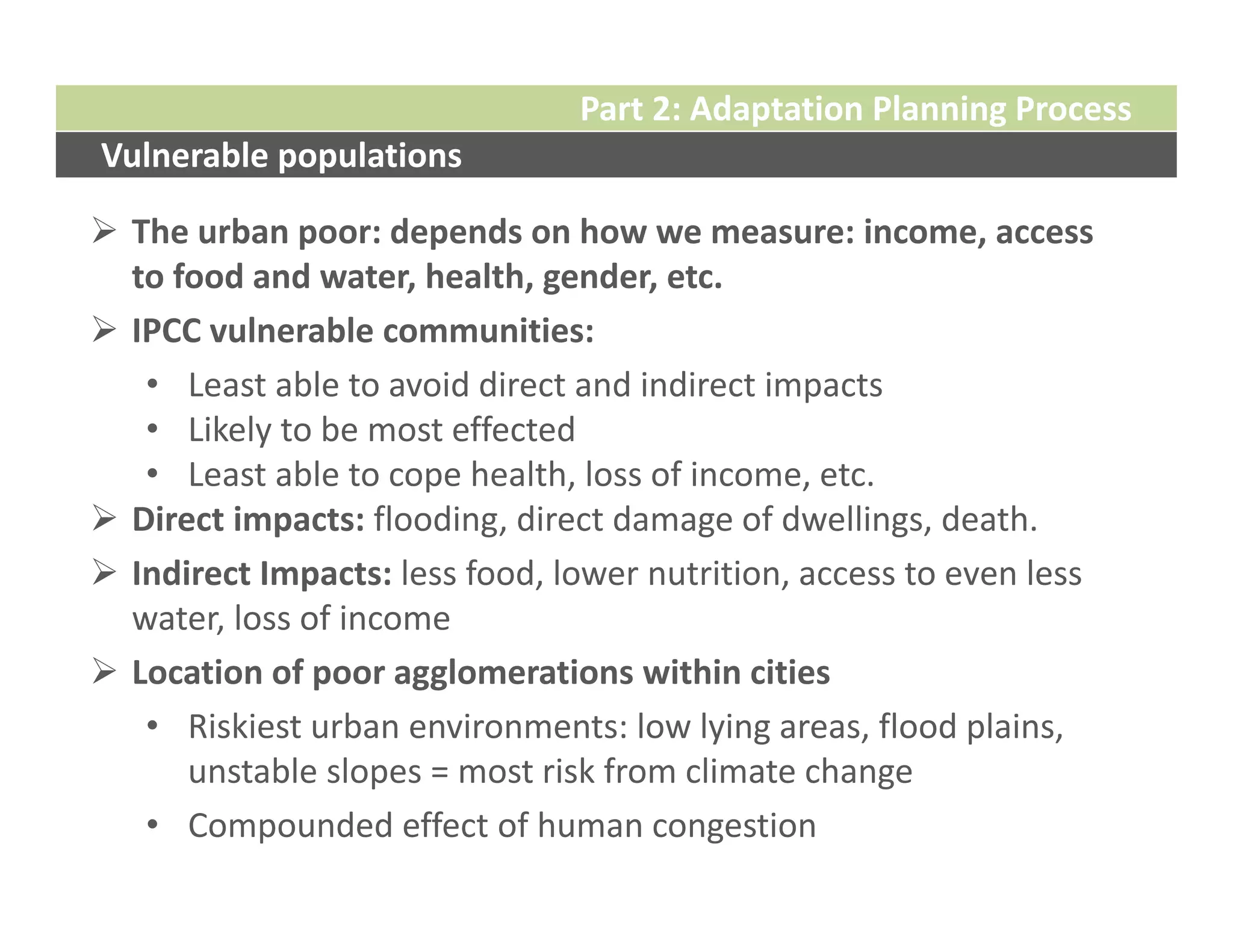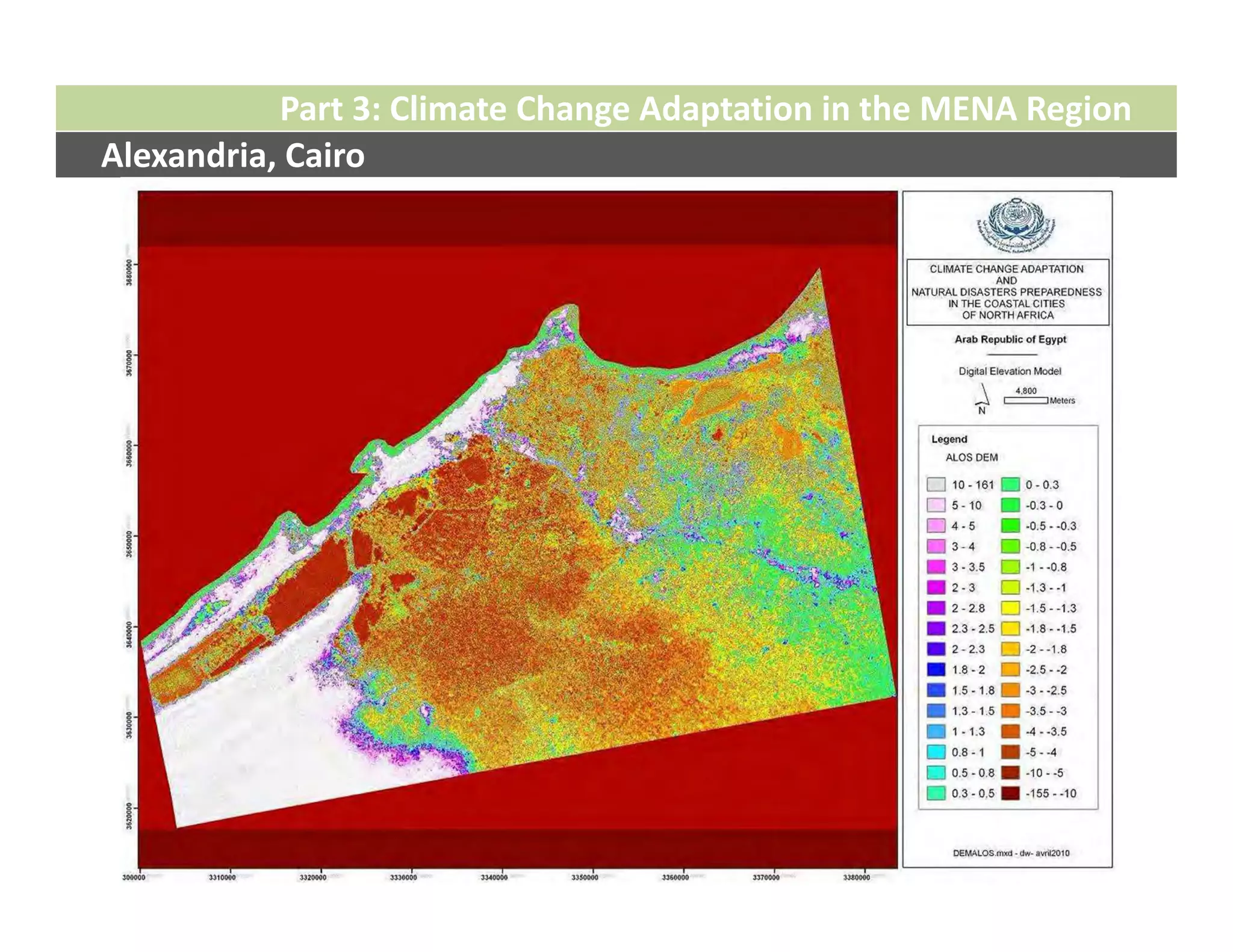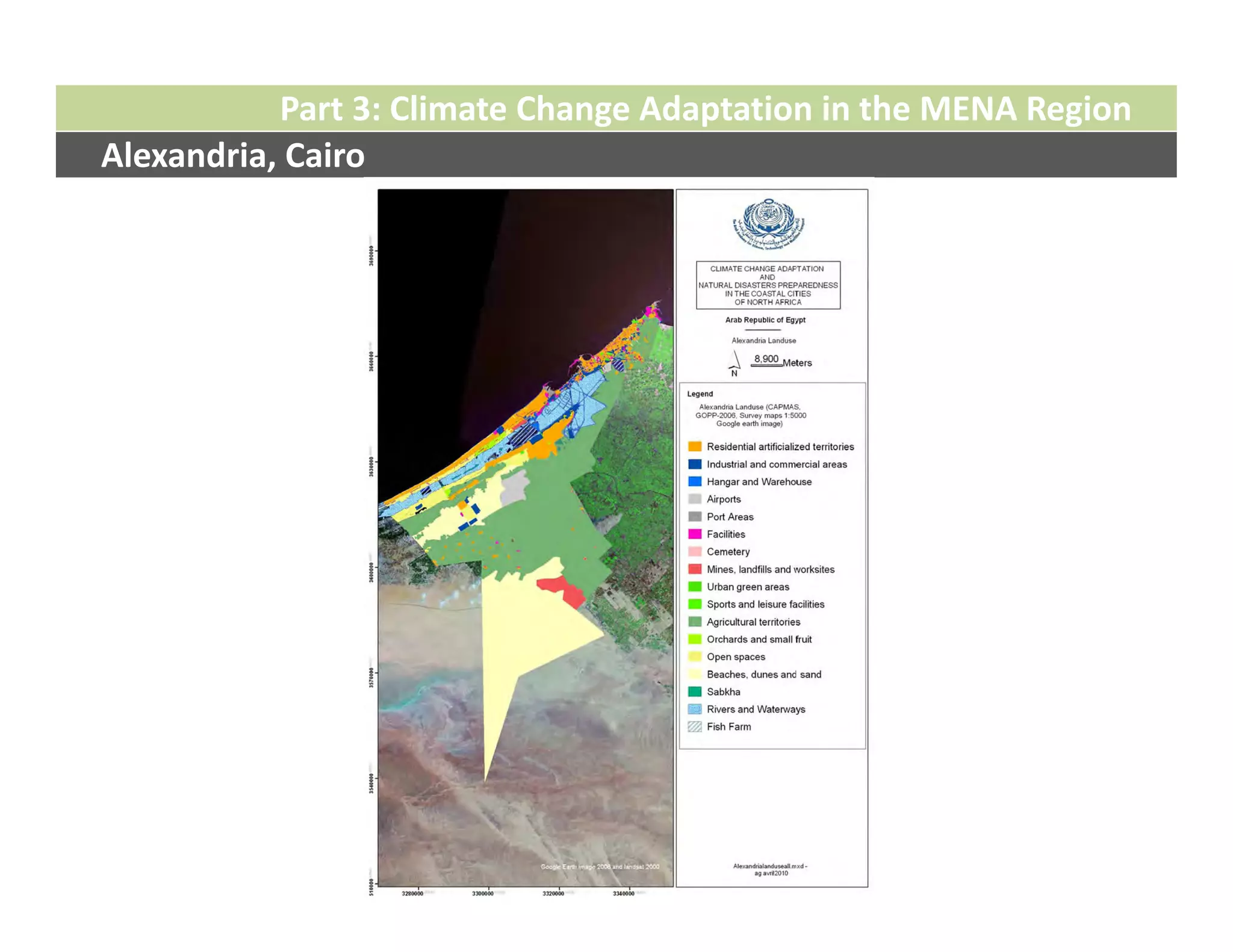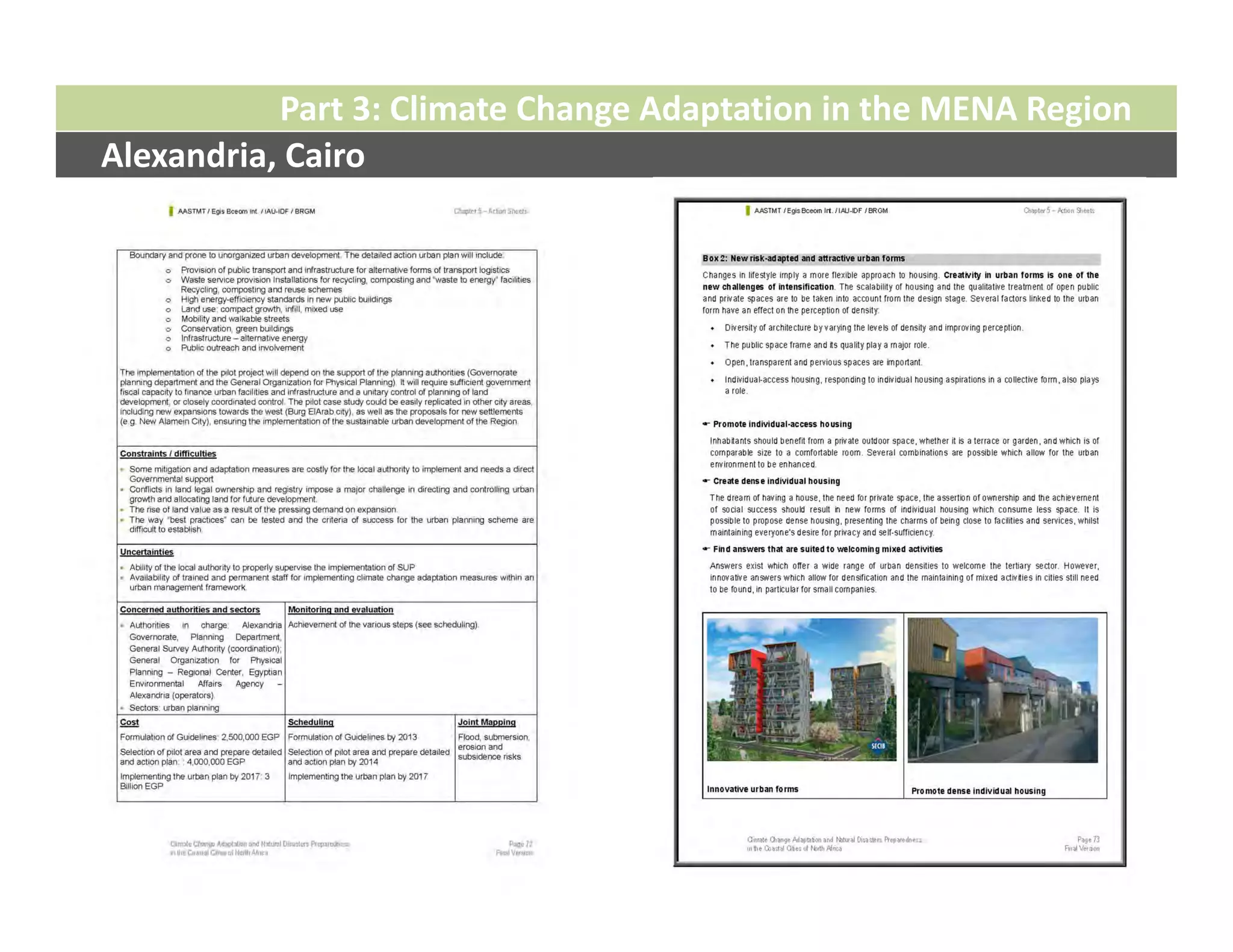The document discusses the spatial dimension of adaptation planning in the context of the Middle East and North Africa (MENA) region. It covers several key topics: (1) an introduction to climate change impacts on livelihoods and urban places; (2) the adaptation planning process and how it differs from conventional planning; and (3) challenges to adaptation planning and examples from cities like Alexandria, Egypt. The document emphasizes that adaptation planning requires a localized approach that considers vulnerabilities, uncertainties, and flexible solutions to address the impacts of climate change on communities and urban areas in the MENA region.





































